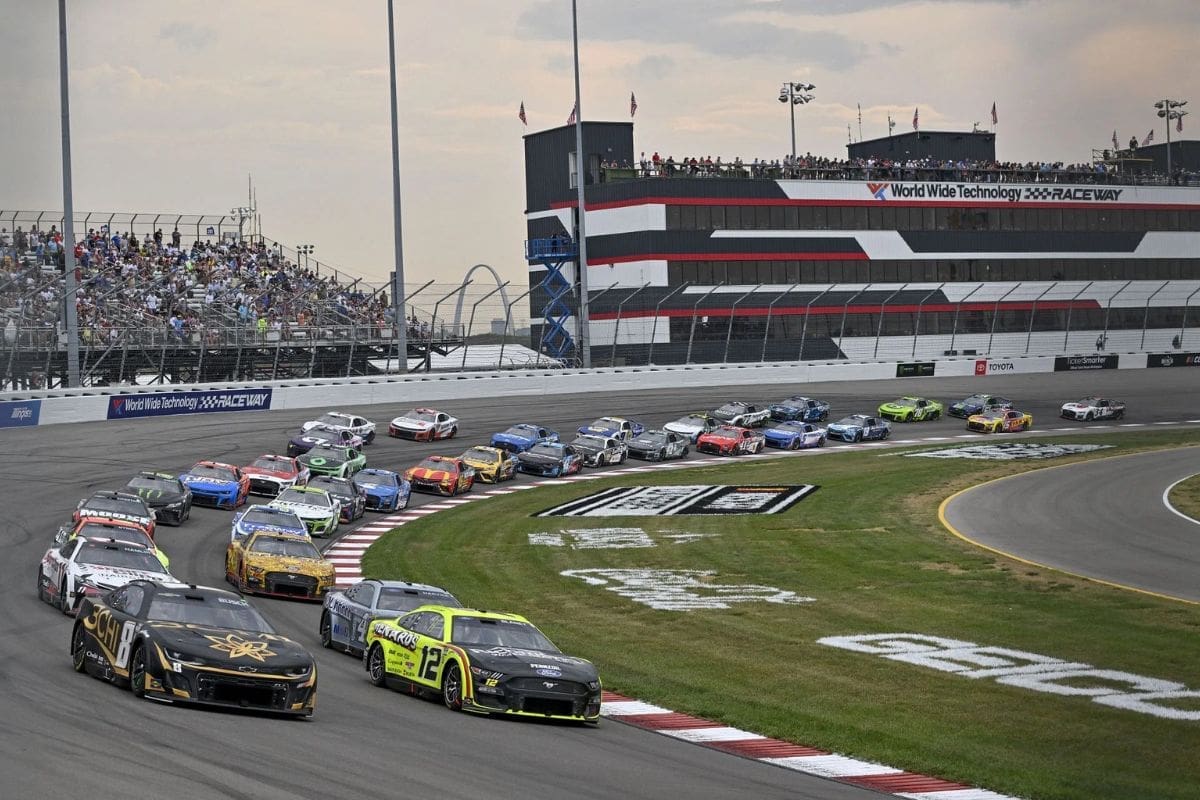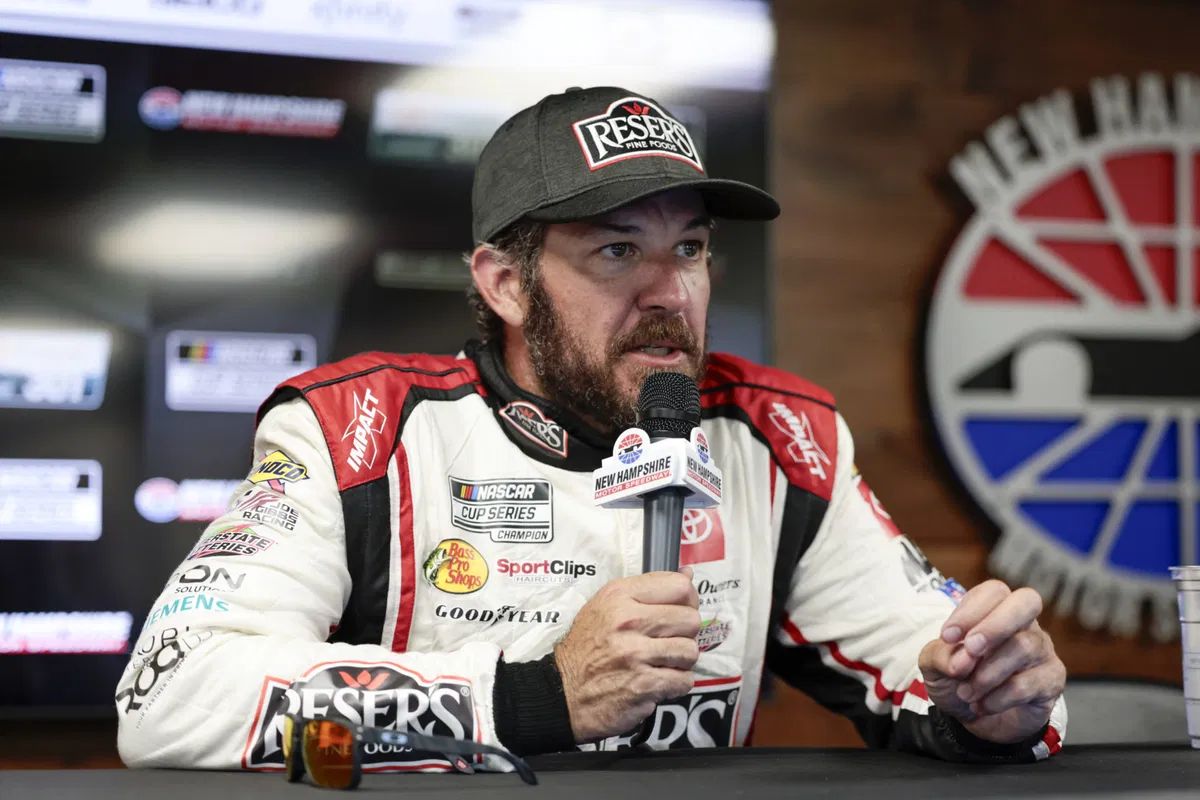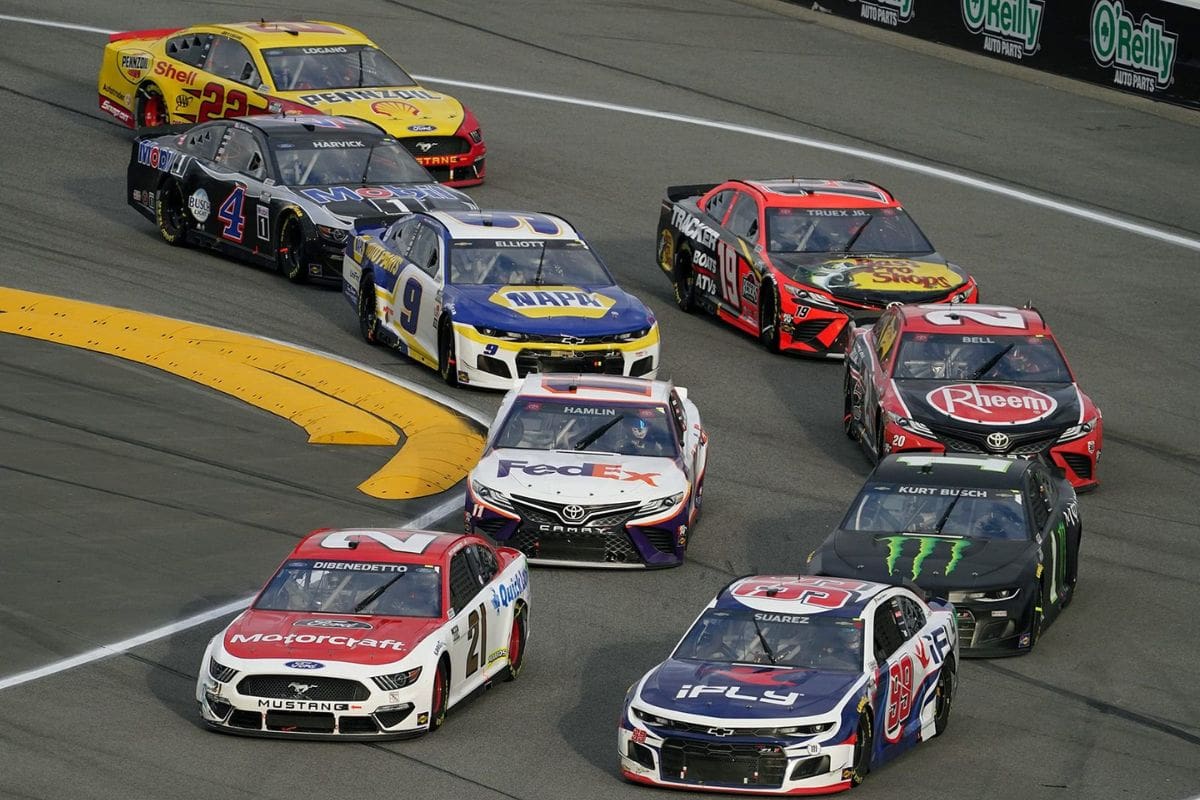Martin Truex Jr. Rages Against NASCAR’s Safety Failures: Martin Truex Jr.‘s recent outcry regarding NASCAR’s safety protocols highlights a critical tension within the sport, particularly following the troubling crash of Josh Berry at the Coke Zero Sugar 400. As Truex articulates his concerns about the Next Gen car’s design and the inadequacies of existing safety measures, it raises crucial questions about the balance between innovation and driver protection. His passionate critique resonates with a broader apprehension among drivers, suggesting that the current safety strategies may not be sufficient in mitigating the risks they face on the track.
Key Highlights
- Martin Truex Jr. voiced strong concerns about NASCAR’s inadequate safety measures, particularly following recent serious accidents like Josh Berry’s crash.
- The introduction of shark fins aimed at preventing rollovers has been criticized as ineffective, highlighting ongoing risks for drivers.
- Truex urges for comprehensive safety reforms rather than superficial fixes, emphasizing the need for thorough evaluations of current protocols.
- Calls for improved vehicle designs, enhanced track safety features, and rigorous testing protocols are essential for better driver protection.
- The NASCAR community is shifting towards a proactive safety culture, prioritizing innovative technologies and continuous driver education on safety practices.
Overview of the Incident
The Coke Zero Sugar 400 witnessed a harrowing incident that reignited concerns over NASCAR’s safety measures. Despite the advancements in safety protocols over the past 76 years, the event highlighted the inherent risks that continue to plague the sport. High-speed collisions and fiery wrecks have long been hallmarks of NASCAR, yet the chilling reality is that incidents capable of causing severe injury or worse remain a part of race day.
During the race, a dramatic crash unfolded that not only shocked fans and participants similarly but also prompted immediate scrutiny of the safety measures currently in place. Martin Truex Jr., an experienced driver, found himself deeply affected by the event, expressing his dismay and frustration at NASCAR’s apparent inability to fully safeguard its athletes.
The incident served as a glaring reminder that even with the stringent regulations and improved car designs, the potential for outcomes persists. In the 21st century, the frequency of fatalities has notably declined, yet the specter of serious accidents looms large.
Truex’s reaction reflects a growing unease among drivers regarding their vulnerability on the track. As NASCAR continues to innovate and evolve its safety standards, the incident at the Coke Zero Sugar 400 emphasizes the importance of ongoing evaluation and improvement of these protocols.
Josh Berry’s Crash and NASCAR’s Experiment
Recent events at Daytona have highlighted the ongoing challenges NASCAR faces in ensuring driver safety, particularly brought to light by Josh Berry’s alarming crash. This incident has reignited concerns among drivers and fans similarly regarding the effectiveness of NASCAR’s safety measures, particularly following their attempt to mitigate rollover incidents with the introduction of air-deflecting shark fins.
Prior to Berry’s crash, NASCAR had responded to Corey LaJoie’s harrowing flip at Michigan, a situation that emphasized the potential dangers inherent in their racing environment. Unfortunately, the deployment of these new safety features has not yielded the desired results.
The implications of these incidents can be summarized in three key points:
- Ineffectiveness of Safety Measures: The shark fins, designed to reduce lift-off, have not proven sufficient in preventing severe crashes, as evidenced by Berry’s incident.
- Increased Driver Anxiety: The recurring nature of these incidents has led to heightened anxiety among drivers, raising questions about their willingness to push the limits on the track.
- Need for Thorough Review: There is a pressing need for NASCAR to conduct a thorough evaluation of its safety protocols, ensuring that they are not only groundbreaking but also effective in protecting drivers.
As the sport evolves, the importance of prioritizing safety cannot be overstated. Without substantial improvements, the risk to drivers will continue to loom, overshadowing the thrilling nature of NASCAR racing.
Martin Truex Jr.’s Frustration
Frustration erupted in Martin Truex Jr. following the unsettling crash at Daytona, where the limitations of NASCAR’s safety measures became painfully evident. The incident, involving Austin Cindric and Josh Berry, illustrated the precariousness of driver safety in the Next Gen car, which has been scrutinized since its introduction in 2022. Berry’s horrific flip onto his roof and subsequent impact with the barrier highlighted the ongoing concerns regarding the design and engineering of these vehicles.
Truex’s reaction was not merely emotional; it was a reflection of the mounting anxiety among drivers regarding their safety. His exasperated call to “take 40 cars, throw them in a dumpster, light them on fire” was a visceral expression of discontent, emphasizing the urgency of reform in NASCAR’s safety protocols.
Take a look at what happened on the backstretch at @DAYTONA. @joshberry exited the vehicle and gave a thumbs up to the crowd. pic.twitter.com/C67wMUvXvD
— NASCAR (@NASCAR) August 25, 2024
The crux of Truex’s frustration lies in the historical context of safety failures within the sport, exacerbated by the Next Gen car’s track record of injuring drivers, including Kurt Busch, who suffered a debilitating concussion.
This incident at Daytona serves as a critical junction for NASCAR, prompting a crucial dialogue about the effectiveness of its safety measures. As drivers like Truex voice their discontent, it becomes increasingly clear that the sport must reassess its commitment to driver safety.
The stakes are high, and the calls for change are louder than ever, making it imperative for NASCAR to prioritize the well-being of its stars in an environment often defined by speed and risk.
Josh Berry’s Reaction and Safety Acknowledgments
In the aftermath of the frightening incident at Daytona, Josh Berry exhibited a remarkable resilience and perspective that contrasted sharply with the intense scrutiny directed at NASCAR’s safety protocols.
While many drivers, including Martin Truex Jr., voiced their frustrations regarding safety measures, Berry emerged from the wreck unscathed, a demonstration of the evolving engineering behind modern race cars. Spotter Eddie D’Hondt confirmed Berry’s well-being, stating, “He said he’s okay,” reflecting the relief that permeated the pits.
Berry’s response to the incident highlighted several key points regarding safety in NASCAR:
- Acknowledgment of Engineering: Berry noted, “The car was so strong,” emphasizing the advancements in vehicle safety that have mitigated the potential for serious injuries in high-speed crashes.
- Optimistic Outlook: Upon exiting his vehicle, he remarked, “It probably wasn’t as bad as it looked,” showcasing his positive perspective amidst the chaos.
- Gratitude Towards Officials: Despite the tumult, Berry and his wife took the time to thank NASCAR officials, contrasting sharply with the frustrations expressed by others, and reinforcing the importance of teamwork and communication.
Berry’s reactions serve as a reminder that while the dangers of racing are ever-present, the continuous improvements in safety protocols and car design are essential in protecting drivers.
His composure in the face of danger, alongside an appreciation for the sport’s ongoing evolution, adds a detailed layer to the ongoing conversation about safety in NASCAR.
Public Response and Future Safety Measures
A growing chorus of voices within the NASCAR community has emerged, reflecting a diverse range of opinions on safety measures following the recent plunge at Daytona. While some, like Josh Berry and his wife Ginny, expressed gratitude for the safety features that protected him during the incident, others, including veteran driver Martin Truex Jr., voiced considerable concerns about the adequacy of current safety protocols.
“Last night was a wild one. Couldn’t be prouder of @joshberry88 and the entire 4 team. First stage win and was leading coming to the white flag, before the big one happened. Thanks to everyone that has reached out and checked on all of us @potterphoto. I’ve watched this many times since last night. I’m thankful for all of the safety measures & that Josh is okay after this.” – Ginny
This division highlights a critical discourse regarding the efficacy of NASCAR’s safety advancements, particularly as Truex advocates for more substantial changes beyond cosmetic adjustments like shark fins.
The mixed responses from drivers suggest a need for a thorough evaluation of safety practices within the sport. Many argue that while advancements have been made, the potential for airborne crashes remains a pressing issue that requires groundbreaking engineering solutions.
The conversation is shifting from mere acknowledgment of safety measures to demanding proactive strategies that prioritize driver welfare.
As NASCAR grapples with these challenges, the public and stakeholders similarly are calling for transparency in safety assessments. The continued scrutiny presents an opportunity for the organization to engage with both drivers and fans, fostering a collaborative environment aimed at enhancing safety standards.
News in Brief: Martin Truex Jr. Rages Against NASCAR’s Safety Failures
The ongoing discourse surrounding NASCAR’s safety protocols highlights a critical need for reform within the sport. Martin Truex Jr.’s vocal criticism, coupled with alarming incidents such as Josh Berry’s crash, clarifies the persistent vulnerabilities associated with the Next Gen car. As drivers increasingly express concerns, it becomes imperative for NASCAR to prioritize thorough safety evaluations and implement proactive measures. Ensuring the protection of athletes should remain paramount to maintain the integrity and future of the sport.
ALSO READ: Martin Truex Jr. on Bristol Heartbreak: NASCAR’s Rulebook Fails to Deliver




